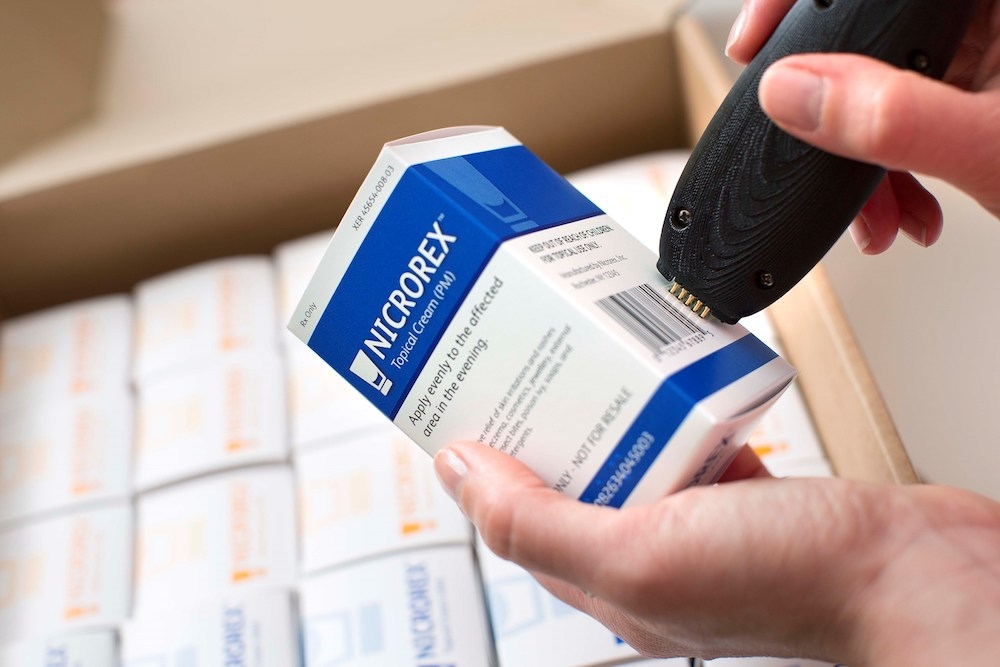
Features
Business
Packaging
Research
Better connected
How smart packaging is changing the way we live and do business
July 29, 2019 By Dr. Paul Smith

Labels. We see them every day on routine items we depend on to get through life.
There are labels on our food, medicine, clothes and technology. They tell us crucial information to help guide our decisions: Nutritional information about the food we consume; how to wash our clothes; how and when we should take medicine; and potentially life-saving warnings about certain products, such as chemicals or prescription drugs.
How often do we actually read these labels? How much information do we actually absorb? For most of us, the answer is “very little.”
Today, brands deliver a disconnected customer experience. They rely on the consumer to make purchasing decisions and understand a product’s intended use by piecing together information from labels, packaging and traditional retail displays. While some of us may read the fine print or visit the brand’s website to learn more, many of us buy what is familiar or perhaps what is on sale. We assume we know how to use a product based on what we’ve done in the past.
But what if our labels, packaging and retail displays could be smarter? Instead of us mining the fine print for information, what if these intelligent devices could simply tell us what we need to know?
As it happens, Xerox scientists and engineers are digging into that question right now. They are carrying out research that promises to bring intelligent elements, such as printed electronics and smart sensors, to product labels and packaging that they say will revolutionize business operations and help make the Internet of Things (IoT) a reality.
Imagine a world where a simple cardboard shelf displays product information – benefits, ingredients and even special offers – on a screen the moment you pick up a package or touch a sensor. Technology embedded into the display would detect your smartphone’s signal and immediately direct you to the brand’s website for more information about the product you have just selected or similar products that might be of interest to you. And, if you choose to receive more information, the brand could customize discounts and offers specific to you before you even leave the store.
This connected customer experience could even continue beyond the store. For instance, a smart drug package could remind patients when and how to take their medication. It would also send information directly to their pharmacy about when a dose has been taken, if the patient needs a refill and even how the patient feels. Patients could connect to their pharmacist and receive ongoing support, and pharmacists could monitor medication adherence and know if the treatment needs to be adjusted.
Meanwhile, the brand and their retail partners gain a better understanding of how customers engage with products. They would know which products their customers purchase, and which ones they pick up and put back on the shelf. They would learn how long customers look at the display and what information is considered most important. They could use this information to improve pricing, discounts and future interactive displays.
Batteries and wires wouldn’t be a problem — they would be printed right onto the shelf and package. Assembly of the smart displays would be completed in mere minutes.
As these technologies mature, new opportunities will become available for players across the value chain, from print providers that create these smart, customized displays and packaging, to retailers and brand owners that hope to create a more meaningful experience for customers by connecting their physical world to the digital realm.
What may have sounded too far-fetched a decade ago is now not only credible, but also well within reach.
Dr. Paul Smith is Vice President and Centre Director of the Xerox Research Centre of Canada (XRCC), one of Canada’s leading materials research centres. With more than 40 years of innovation research experience, XRCC’s mission is to drive business growth through the commercialization of breakthrough materials, technologies and services.
This article was originally published in the July/August 2019 issue of PrintAction and Summer 2019 issue of Packaging for Printers, both available online.
Print this page